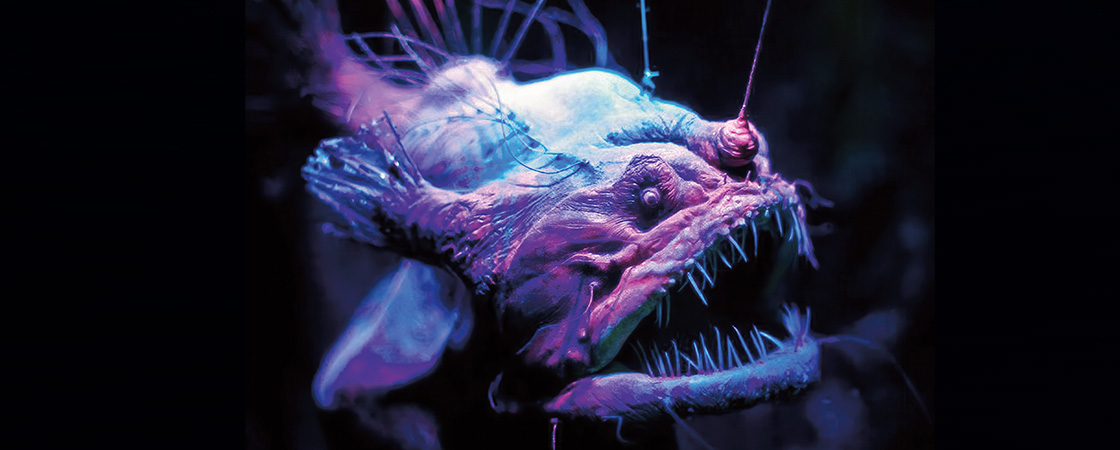Morgan Trimble/Alamy Stock Photo
You’re gliding deep underwater. It’s dark—very dark. You are more than 3,000 feet below the surface of the ocean, in the midnight zone. Down here, it’s too deep for sunlight to reach.
Luckily, you’re made for darkness. You are a lanternfish, named after the blue-green lights that glow on your body. You’re about the size of a human finger, with big eyes that help you peer through the blackness.
A bright, dazzling light is floating ahead. You swim closer and closer . . .
Suddenly, you see a flash of ghostly pale eyes. Wrinkly skin. Long, spiky teeth.
Aaaah! It’s an anglerfish! This terrifying creature has a bony rod like a fishing pole sticking out of its head. At the tip of the rod is a small, glowing light. It helps the anglerfish attract other fish to eat—like you!
Chomp! You swim away before the anglerfish grabs you. But there are many more dangers lurking in the darkness. Next time, you might not be so lucky.
You’re swimming deep underwater. It’s dark. Very dark. You are more than 3,000 feet deep in the ocean. You’re in a place called the midnight zone. Down here, it’s too deep for sunlight to reach.
Luckily, you’re made for darkness. You are a lanternfish. You’re named after the blue-green lights that glow on your body. You’re about the size of a human finger. You have big eyes that help you look through the blackness.
A bright, sparkling light is floating ahead. You swim closer and closer . . .
Suddenly, you see two white pale eyes, wrinkly skin, and long, spiky teeth.
This is an anglerfish. It’s terrifying! It has a bony rod (that looks like a fishing pole) sticking out of its head. At the tip of the rod is a small glowing light. It helps the anglerfish draw in other fish to eat—like you!
Chomp! You swim away just in time. But there are many more dangers hiding in the darkness. Next time, you might not be so lucky.

